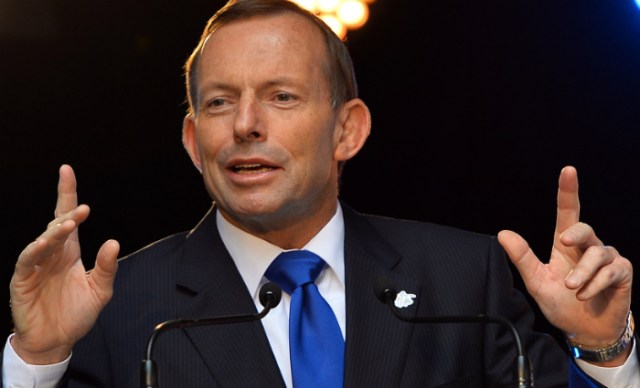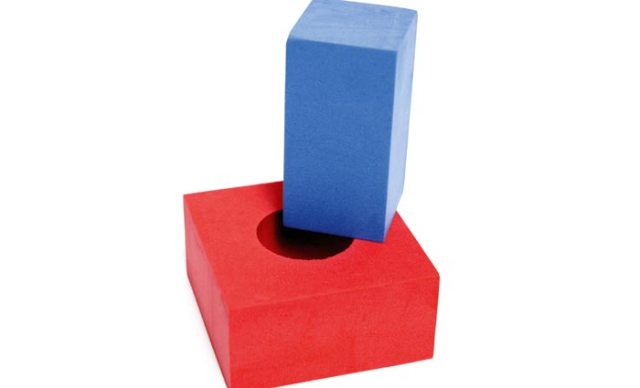
The printing industry is no stranger to merger and acquisition (M&A) activity. With its overcapacity and fragmentation, it is always ripe for another wave of mergers. The big question is whether consolidation will itself be a catalyst for the change some firms so desperately need, or whether those firms will have to change first to ensure any consolidation is successful.
Few things have shaped the recent history of trans-Tasman print as much as private equity-backed consolidation. The two biggest private equity (PE) buyouts – Gresham’s 2005 acquisition of Pacific Print Group to create Geon Group and CHAMP’s acquisition of Blue Star Print Group in 2006 – have redefined the landscape, with mixed results for all involved. There are other PE examples, both good and bad. They range from Knox Investment Partners’ creation of Opus Print Group to Helmsman Fund Management’s backing of failed Sydney printer Chippendale Printing.
Successful or otherwise, the appearance of these consolidated groups creates market pressure for others in the industry to follow the same M&A path.
For many, finding a buyer is a way to save the business. For two years, Document Printing Australia (DPA) tried to find a buyer, with no success at all. When DPA went in liquidation in September, one of the directors, who asked not to be named, told ProPrint that a series of deals to sell the business had fallen through. Promises were made but the potential acquirers backed off, including one in June this year.
As a rule, the history of company mergers is not pretty and that’s true of every industry. Mergers are seized on as a path to growth, but study after study shows that most mergers – some put it as high as 70% – fail to deliver and destroy shareholder value. Most mergers fail because companies pay too much and underestimate the time and resources required to bring two companies together. There are also personality issues where people from different companies don’t get on. Meanwhile, employees of acquired companies often leave because they are worried about the future.
Rescue attempts
A problem for printers is that in this economic climate, many proposed mergers are nothing but rescue attempts, as opposed to bulletproof strategies. If mergers are to work, they have to be totally strategic.
DPA’s story is only one example. According to figures from the Australian Bureau of Statistics, printing industry sales for the June quarter rose by just 2% year-on-year. The industry recorded a 5.1% decline in sales for the entire financial year, as overall revenues totalled $8.4bn. Similarly, the Australian Industry Group’s analysis of the manufacturing industry for the month of August indicated that the ‘printing and publishing’ industry was one of the sectors said to have “experienced the biggest falls in activity”.
There’s a widely held perception in the industry that volumes have fallen by as much as 20-25% over the past two years.
According to the October newsletter of corporate turnaround specialist Ferrier Hodgson: “With the prevailing conditions, there are always opportunities. Larger entities may seek to consolidate by acquisitions and in doing so increase capacity, clientele and market share. This consolidation aims to create larger, more robust entities with more flexible cost structures better able to take advantage of economies of scale.
“The resulting businesses are likely to have greater access to capital to invest in new equipment, which in turn will reduce fixed costs and boost productivity.”
But the picture for some companies in the printing industry is grim. This means one thing: there will be many companies going cheap. Good news for buyers, but a tough reality for sellers.
Robert Hurst, director of business brokers Hurst Partners says that in the wash-up of the global financial crisis, there is a massive gap between the asking price and what’s actually paid. “If you can get three-quarters of the original asking price, you are doing pretty well,” Hurst says.
One potential example of a strategic merger is the deal between North Sydney companies Style Communications and Imprint Printing. In August, they merged after nearly three decades as “friendly competitors”. The companies, both based in the Sydney suburb of Mona Vale, now operate under the Style Communications banner.
Style Communications manager Shayna Price said she and Imprint Printing principal Robert Casey could make it work. “I am from a digital print background, he is from an offset print background so it’s worked really well,” Price says. “We have complemented each other quite well. What you can’t do digitally, you can do in offset.”
Price says the merger was totally strategic. Style had been outsourcing all its offset work, at some cost.
“We now have it internally and we can manage that better,” she says. “We have always outsourced offset so bringing it in-house, we control how we serve our customers and the output of everything so we deliver a better service. There’s more customer satisfaction, more control and lower overheads because you are not paying a third party. For example, I would be paying a supplier $200 for 1,000 two-colour business cards whereas now it’s costing us a third of that.”
She says the key to creating a good merger is to look carefully at what value the other business brings to the table. For Style Communications, bringing the offset function in house was a natural fit.
“You are not buying a customer base. You are buying the experience the company has and how well they can satisfy those customers. I wouldn’t buy a digital print company for the sake of buying because you are just taking your own bread and butter. All we did was take on a complementary service that we couldn’t service ourselves initially.”
Advisors to the print industry who have seen several mergers go off the rails say that many of the problems lie with the peculiar characteristics of the industry.
Mark Reid, industry researcher and Enterprise Connect business advisor at North Link, puts it bluntly: “The dominant issue that hasn’t gone away for a long time and doesn’t look like it’s going away is the overcapacity relative to demand. There are way too many printers and if they all ran their machines at capacity, the problem would be so bad it would cause a rapid clean-out.”
Fragmented industry
The industry turns over billions of dollars – some put it in the region of $8bn to $9bn – but that is generated by a massively fragmented group of 5,000-6,000 printing businesses.
“The dynamics around commercial printing are different from the normal models that explain markets for mergers and acquisitions,” Reid says.
“Yes, it’s right for consolidation but it’s not consolidation in the normal sense of two modestly profitable companies getting together to make one profitable company because the consolidation process requires that when they do get together, they have to get rid of the excess capacity because they are not going to fill it.
“There is a lot of capacity that is not being utilised. There are many small printers that have equipment that is run for maybe half the available hours during the week,” adds Reid.
“The demand is relatively flat or declining, so you would have a lot of people who would want to get out rather than consolidate. The big problem is how are they going to get out? Who is going to pick up their asset if they do?”
Reid agrees that mergers between printers can only be successful if they are highly strategic. Buying a company to save yourself or because the other one is going cheap will not work.
“The very important thing is to have a very strong focus on the strategic component that justifies the transaction and then make sure the operations in the new entity reflect that strategy,” he says.
Problems for PE
David Williams, managing director of investment bank Kidder Williams, raises questions as to whether the private equity takeovers actually generated that much profitability. Again, this is due to the idiosyncrasies of the printing industry.
He doesn’t believe mergers will solve the industry’s problems simply because of the way the industry is structured.
“The way the industry looks at itself is different from the way people outside the industry look at it,” Williams says. “There are thousands of sheetfed printers around the country and a number of PE firms have tried to do roll-ups. They have successfully rolled them up but I’d be interested to see whether they have been making any profits.
“People have tried to do it by taking out the large sheetfed printing guys but there are still people snapping around your heels wherever you look. In Victoria alone, if you didn’t have 2,000 sheetfed guys, I’d [be surprised]. Even in small country towns, you’ll find half a dozen of them,” says Williams.
“You have to remember that a lot of these printing machines last forever so if a little guy wants to set up a factory in a place like Oakleigh, he can make a living buying an old piece of equipment and doing some pretty simple stuff.
“I don’t know if you are ever going to get rid of that overcapacity in the sheetfed industry, and for that reason it will always be competitive. It’s a very different industry and I don’t think you will ever
get to the stage where you can aggregate them because you can’t afford to buy out the small guys.”
And besides, you would never get their customers. Imagine, for example, a printer in Coogee doing business cards and letterheads for a local panel beater. If the Coogee printer is taken over by a bigger firm and the operations moved to Homebush, the panel beater would simply take his business to another printer in Coogee.
Williams adds that mergers are unlikely to work in the web printing world because the companies in that space are so fiercely independent.
Richard Rasmussen, director of print industry consulting firm Ascent Partners, says another reason why printers find mergers difficult is because of the peculiarities of the people who go into the trade. Printers are fiercely independent. They are used to running their own show so merging with another company would be, to their mind, out of the question.
“It’s basically a trade-based industry,” Rasmussen says. “There are people who have started as trade-based people and they only know how to run a printing business. Most of their focus has been on the trade. That is, to put marks on sheets of paper not sell and market themselves. They can’t really get their heads around the fact that they need to join forces with other people to make it profitable.”
And yet, he says, mergers remain the best option for many printers. “If you have a printing establishment that’s turning over $3m and I have one that’s also turning over $3m, and we have the same gear and are both running a single shift, if you pay rent and if I pay rent, then it would make sense to join forces.
“We would have a $6m business, get rid of half the gear, probably decrease our staffing by 25% and then we would make some money. But people do not go out to pursue that because they are used to running their own race and don’t think it would work with another person,” he adds.
The problem, says Rasmussen, is that the GFC has changed things. Consolidation by private equity combined with a flat to shrinking market will put pressure on printers to find merger partners. Things are so tough now that paper suppliers now have many printers paying cash on delivery. In addition to that, new business models are emerging to compete with small printing companies. It’s possible to get business cards free off the internet. All this should create more incentive for consolidation.
Rasmussen says some mergers just will not work. If the people do not get on, it’s a recipe for disaster. Joining forces with a printer that has massive debts or negative equity on their equipment would also fail.
He says mergers in the printing industry will only work if the companies decide to diversify. “It works better if you have, for example, a digital company joining forces with an offset printer, or joining up with a warehousing operation and pre-press operation,” he says.
Combining different skill sets is another way to increase the odds of success. “If you’re a production person and I’m a production person, then we will run into problems because we have the same skills,” he says.
“It works better if we have different skill sets. If I am a sales guy and you are a production guy, or if you’re a finance guy and I’m into marketing, then it makes sense because we have complementary skills, not overlapping skills. Then it makes sense because the egos don’t get in the way and we have a shared vision.”
Merging world – Big time consolidation
Consolidation has shaped the big end of town. The biggest printer, PMP, has gobbled up a number of smaller players on both sides of the ditch. One of the largest and most recent was its $80m deal for Times Printers in 2007. IPMG is renowned for keeping a lid on its business deals. But its recent track record is a mix of investment and divestment. It has continued to grow in new media, most recently with the buyout of Blue Freeway in 2008. But it has also shed traditional media divisions, closing distribution business NDD this year and selling publishing arm FPC to News Ltd in 2007.
The impact of major private equity-equity backed companies Geon and Blue Star can’t be ignored. Both groups have been pieced together through constant M&A activity over the past decade. According to research agency IBIS World, the big four trans-Tasman groups – PMP, IPMG, Blue Star and Geon – hold almost 18% market share combined.
The same applies to suppliers. Only in October, KBA deputy president Claus Bolza-Schünemann said consolidation in the press market was crucial for manufacturers to start making money again. You only need to look at the stop-start rumours of merges between the three major German offset manufacturers over the past few years to see that M&A is a definite possibility on the vendor side.
M&A activity has also reshaped the European and US print markets. Dutch print giant Roto Smeets has been involved in several pan-European acquisition plays, though has been thwarted recently as the GFC creates havoc for EU economies.
The world’s biggest printers, RR Donnelley, this year moved to acquire rival Bowne & Co to create a US$3bn juggernaut. The multi-billion dollar marriage is still being worked out.
In January, Wisconsin-based Quad/Graphics announced it would acquire Montreal-based World Color Press for $US1.2bn. The merged company has 30,000 employees in the US and Canada and is North America’s second-largest commercial printer by sales.
Comment below to have your say on this story.
If you have a news story or tip-off, get in touch at editorial@sprinter.com.au.
Sign up to the Sprinter newsletter


